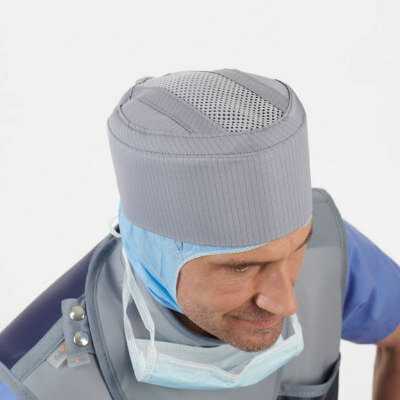Study Shows fMRI Scans May Include Too Many False Positive Results
|
By MedImaging International staff writers Posted on 18 Jul 2016 |

Image: An example of a functional Magnetic Resonance Imaging (fMRI) scan (Photo courtesy of the Athinoula A. Martinos Center for Biomedical Imaging at Massachusetts General Hospital).
Researchers in Sweden have shown that statistical techniques in widespread use today for analyzing brain activity based on fMRI scans may be unreliable.
The study was published online before print in the June 28, 2016, issue of the Proceedings of the National Academy of Sciences (PNAS). The researchers tested existing analysis techniques by using them to analyze know reliable data, and found that functional spatial extent inferences from Magnetic Resonance Imaging (fMRI) images showed false positive activity in the brain in up to 60% of the cases, instead of the accepted number of 5%.
The researchers from Linköping University (Linköping, Sweden), and the University of Warwick (Coventry, UK) used new statistical analysis methods, based on fewer assumption and one thousand times more calculations than existing methods, and were able to achieve results that were significantly more certain. The researchers used modern computer graphic processing cards and were able to reduce the processing time considerably.
The researchers used imaging data from 499 healthy subjects, made three million comparisons of randomly selected groups of subjects, and analyzed the data using existing calculation methods and the new heavier calculation techniques. The researchers found that the new methods achieved a considerably better result, with only 5% difference, compared to differences of up to 60% using existing analysis techniques.
Dr. Eklund, Linköping University, said, "It really feels great; it's recognition and I hope we can get a discussion going in research circles regarding how we validate models. Today, there is both data available to validate and enough processing power to perform the calculations."
Related Links:
Linköping University
University of Warwick
The study was published online before print in the June 28, 2016, issue of the Proceedings of the National Academy of Sciences (PNAS). The researchers tested existing analysis techniques by using them to analyze know reliable data, and found that functional spatial extent inferences from Magnetic Resonance Imaging (fMRI) images showed false positive activity in the brain in up to 60% of the cases, instead of the accepted number of 5%.
The researchers from Linköping University (Linköping, Sweden), and the University of Warwick (Coventry, UK) used new statistical analysis methods, based on fewer assumption and one thousand times more calculations than existing methods, and were able to achieve results that were significantly more certain. The researchers used modern computer graphic processing cards and were able to reduce the processing time considerably.
The researchers used imaging data from 499 healthy subjects, made three million comparisons of randomly selected groups of subjects, and analyzed the data using existing calculation methods and the new heavier calculation techniques. The researchers found that the new methods achieved a considerably better result, with only 5% difference, compared to differences of up to 60% using existing analysis techniques.
Dr. Eklund, Linköping University, said, "It really feels great; it's recognition and I hope we can get a discussion going in research circles regarding how we validate models. Today, there is both data available to validate and enough processing power to perform the calculations."
Related Links:
Linköping University
University of Warwick
Latest Imaging IT News
- New Google Cloud Medical Imaging Suite Makes Imaging Healthcare Data More Accessible
- Global AI in Medical Diagnostics Market to Be Driven by Demand for Image Recognition in Radiology
- AI-Based Mammography Triage Software Helps Dramatically Improve Interpretation Process
- Artificial Intelligence (AI) Program Accurately Predicts Lung Cancer Risk from CT Images
- Image Management Platform Streamlines Treatment Plans
- AI-Based Technology for Ultrasound Image Analysis Receives FDA Approval
- AI Technology for Detecting Breast Cancer Receives CE Mark Approval
- Digital Pathology Software Improves Workflow Efficiency
- Patient-Centric Portal Facilitates Direct Imaging Access
- New Workstation Supports Customer-Driven Imaging Workflow
Channels
Radiography
view channel
Novel Breast Imaging System Proves As Effective As Mammography
Breast cancer remains the most frequently diagnosed cancer among women. It is projected that one in eight women will be diagnosed with breast cancer during her lifetime, and one in 42 women who turn 50... Read more
AI Assistance Improves Breast-Cancer Screening by Reducing False Positives
Radiologists typically detect one case of cancer for every 200 mammograms reviewed. However, these evaluations often result in false positives, leading to unnecessary patient recalls for additional testing,... Read moreUltrasound
view channel
Deep Learning Advances Super-Resolution Ultrasound Imaging
Ultrasound localization microscopy (ULM) is an advanced imaging technique that offers high-resolution visualization of microvascular structures. It employs microbubbles, FDA-approved contrast agents, injected... Read more
Novel Ultrasound-Launched Targeted Nanoparticle Eliminates Biofilm and Bacterial Infection
Biofilms, formed by bacteria aggregating into dense communities for protection against harsh environmental conditions, are a significant contributor to various infectious diseases. Biofilms frequently... Read moreNuclear Medicine
view channel
New SPECT/CT Technique Could Change Imaging Practices and Increase Patient Access
The development of lead-212 (212Pb)-PSMA–based targeted alpha therapy (TAT) is garnering significant interest in treating patients with metastatic castration-resistant prostate cancer. The imaging of 212Pb,... Read moreNew Radiotheranostic System Detects and Treats Ovarian Cancer Noninvasively
Ovarian cancer is the most lethal gynecological cancer, with less than a 30% five-year survival rate for those diagnosed in late stages. Despite surgery and platinum-based chemotherapy being the standard... Read more
AI System Automatically and Reliably Detects Cardiac Amyloidosis Using Scintigraphy Imaging
Cardiac amyloidosis, a condition characterized by the buildup of abnormal protein deposits (amyloids) in the heart muscle, severely affects heart function and can lead to heart failure or death without... Read moreGeneral/Advanced Imaging
view channel
New AI Method Captures Uncertainty in Medical Images
In the field of biomedicine, segmentation is the process of annotating pixels from an important structure in medical images, such as organs or cells. Artificial Intelligence (AI) models are utilized to... Read more.jpg)
CT Coronary Angiography Reduces Need for Invasive Tests to Diagnose Coronary Artery Disease
Coronary artery disease (CAD), one of the leading causes of death worldwide, involves the narrowing of coronary arteries due to atherosclerosis, resulting in insufficient blood flow to the heart muscle.... Read more
Novel Blood Test Could Reduce Need for PET Imaging of Patients with Alzheimer’s
Alzheimer's disease (AD), a condition marked by cognitive decline and the presence of beta-amyloid (Aβ) plaques and neurofibrillary tangles in the brain, poses diagnostic challenges. Amyloid positron emission... Read more.jpg)
CT-Based Deep Learning Algorithm Accurately Differentiates Benign From Malignant Vertebral Fractures
The rise in the aging population is expected to result in a corresponding increase in the prevalence of vertebral fractures which can cause back pain or neurologic compromise, leading to impaired function... Read moreImaging IT
view channel
New Google Cloud Medical Imaging Suite Makes Imaging Healthcare Data More Accessible
Medical imaging is a critical tool used to diagnose patients, and there are billions of medical images scanned globally each year. Imaging data accounts for about 90% of all healthcare data1 and, until... Read more
Global AI in Medical Diagnostics Market to Be Driven by Demand for Image Recognition in Radiology
The global artificial intelligence (AI) in medical diagnostics market is expanding with early disease detection being one of its key applications and image recognition becoming a compelling consumer proposition... Read moreIndustry News
view channel
Bayer and Google Partner on New AI Product for Radiologists
Medical imaging data comprises around 90% of all healthcare data, and it is a highly complex and rich clinical data modality and serves as a vital tool for diagnosing patients. Each year, billions of medical... Read more




















